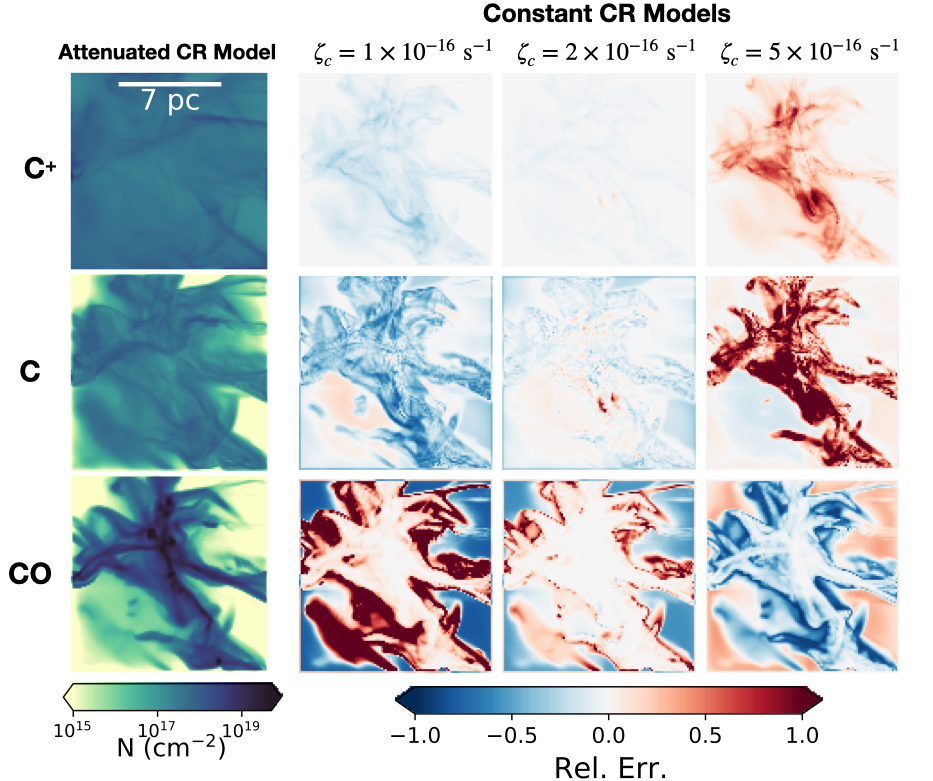Cosmic Ray Attenuation and the Molecular Carbon Cycle
Brandt Gaches
The flux of cosmic rays (CRs), particularly protons with energies below 1 GeV, regulates the chemistry of dense molecular gas shielded from ultraviolet radiation. The destruction of carbon monoxide, CO, can be dominated by interactions with He+, produced through the ionization of neutral helium by CRs. Therefore, the flux of CRs, parameterized through the CR ionization rate (CRIR) is one of the most fundamental parameters in any astrochemical model.
CRs lose significant energy as they travel through molecular gas. However, astrochemical models typically assume a constant CRIR throughout the cloud. We have modified the public astrochemistry code, 3D-PDR, to include a three-dimensional treatment of CR attenuation. Figure 1 shows the column density of ionized carbon, C+, neutral carbon, C, and carbon monoxide, CO for the model with the model for CR attenuation and the deviations of the column densities in three different models with fixed CRIRs, relative to the attenuated model. The figure shows that no single CRIR model reproduces the column densities of the attenuated CR model.
We then computed the flux from three different line transitions: [CII] at 158 micron, [CI] at 609 micron and CO at 115 GHz. Figure 2 shows the integrated flux for these lines for the attenuated model and the deviations in the integrated flux for the three constant CRIR models with respect to the attenuated CR model. For C+ and C, the lower constant CRIR models are dimmer than the attenuated model, while the higher constant CRIR more is brighter. The inverse is true for CO, with almost no differences in the flux of CO towards the densest regions. Our models show that astrochemical models to predict the emission from multiple species should include models of CR attenuation.

